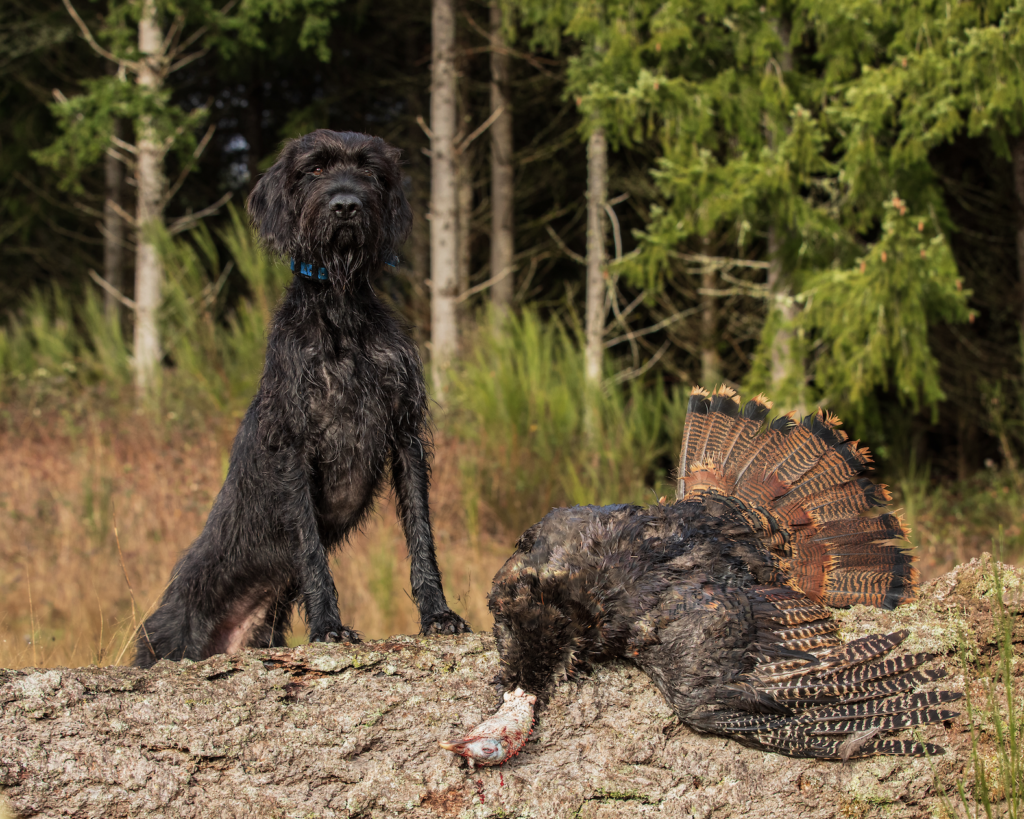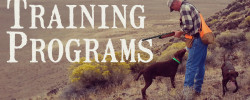October is here, the best month of the season if you’re a bird hunter with a versatile gun dog. From doves to ducks, geese to crows, chukar to pheasant, turkey to snipe, even gray squirrels, there’s no shortage of thrilling hunts to be had, and our pudelpointers love it!
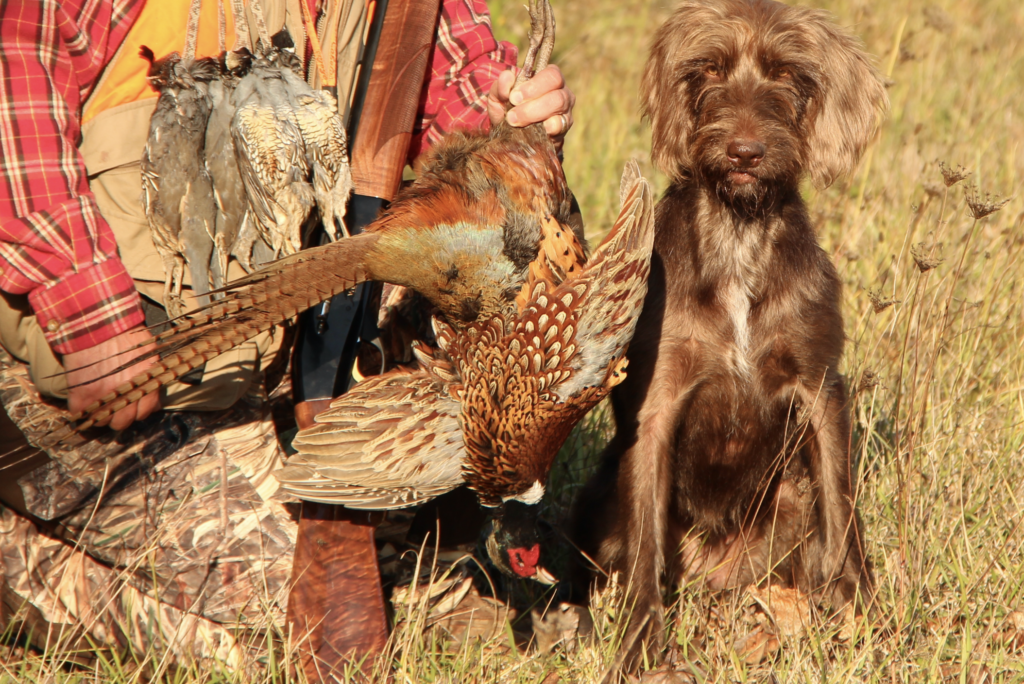
While chukar, Huns’, pheasant and desert grouse are on the minds of many upland bird hunters this time or year, don’t forget to get into the forests in search of multiple species. This is where you’ll find ruffed and blue grouse, mountain and valley quail, and sometimes all in the same day. With the current warming trends, you’ll also come across California ground squirrels. Western gray squirrels love the forests, and don’t forget fall turkey season, which gun dogs love hunting. Our line of pudelpointers thrive on getting after all of these birds and furry critters during the fall. Pudelpointers are a hard working, driven, very versatile breed of gun dog and we strive to achieve a quality bloodline so you can enjoy all these gun dogs have to offer.
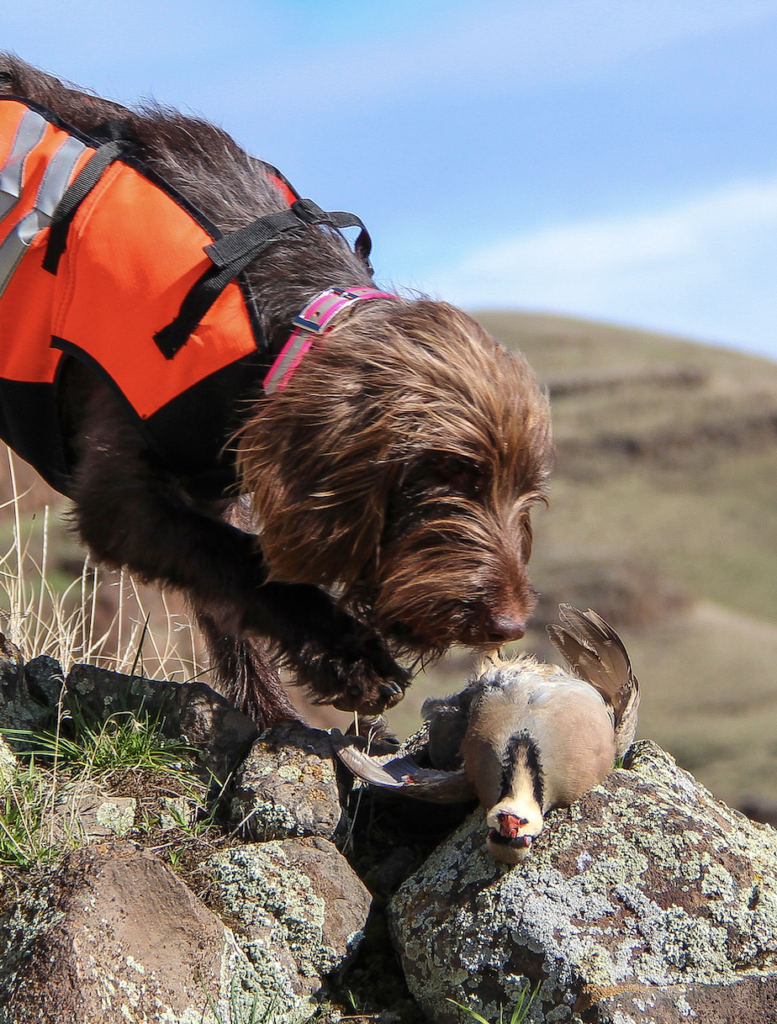
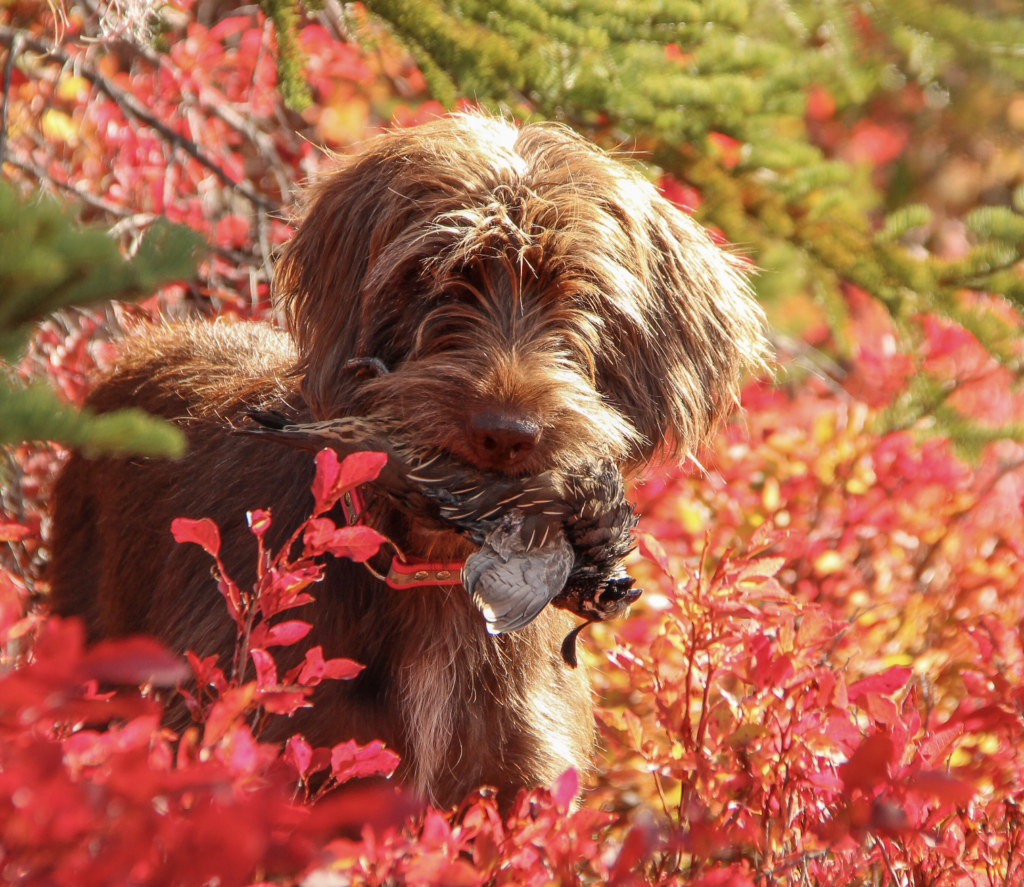
Both the Cascade Mountains and Coast Range hold all four upland gems, gray squirrels and turkeys. Typically, you’ll find valley quail at lower elevations, ruffed grouse from creek bottoms to the high peaks, and mountain quail and blue grouse from mid to high elevations. Turkey and gray squirrels can be found anywhere. Don’t be surprised to find valley quail above 2,500 feet, especially if newly logged units provide food and cover. It’s not uncommon to find both quail subspecies in the same place, especially as winter approaches and mountain quail drop in elevation.
Ruffed grouse are largely homebody birds. They love lowland river and creek habitats, but also thrive in dense, 10 to 15 year Douglas fir. Prime ruffed habitat consists of thick cover bordering semi-open terrain with a nearby creek. These riparian zones also hold good valley quail, and are great work hunting with that versatile gun dog.
The strain of blue grouse occupying lands from the Cascades to the Coast are the sooty, while habitats east of the Cascades hold dusky blue grouse. Many sooty hunters begin the search at 2,500 feet. However, in recent years we’ve been seeing a lot of blues between 500 and 750 feet, thanks to the availability of food and favorable nesting conditions. It’s not uncommon to take blues and ruff’s on the same ridge; again, something gun dogs love, especially pudelpointers, which can hunt for hours in this habitat.
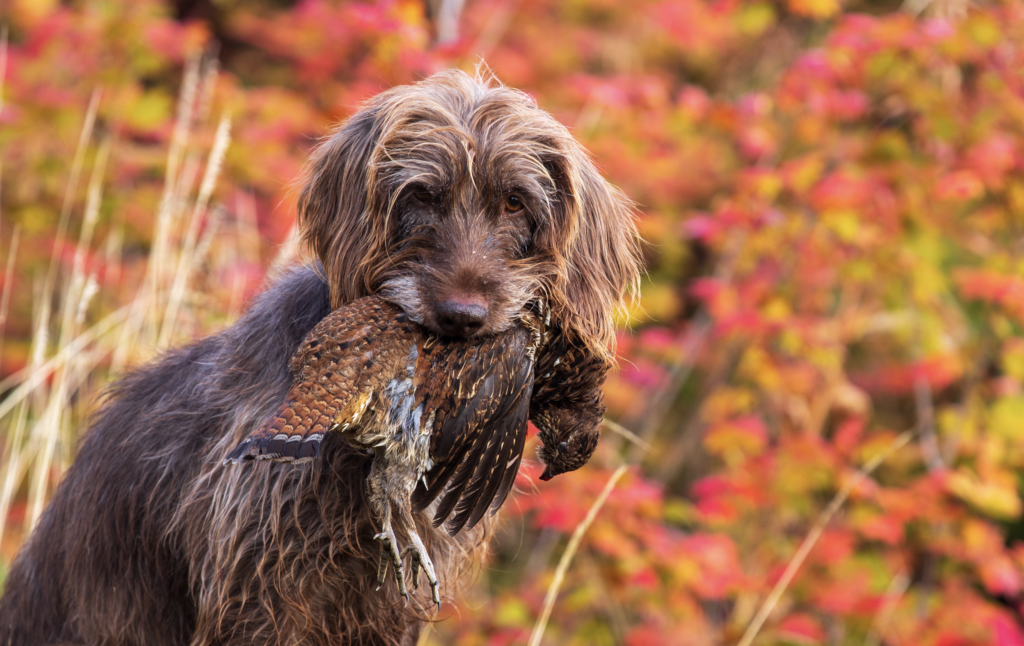
Sooty grouse prefer older stands of Douglas fir timber situated near clearcuts. A surprising number of sooty grouse occupy very rugged terrain that’s been disturbed by landslides, logging, even wildfires, too, something pudelpointers can handle. Where a disturbance creates an opening in steep country, and is near habitat that holds food, water and cover, a good number of blues can be found, but having mature timber nearby is key.
Blue grouse will occupy different habitats across their range based on food availability. Early in the season insects make up a large part of the blue’s diet, but this time of year it’s largely fir and tamarack needles. They’ll feast on grasshoppers if they’re still out.
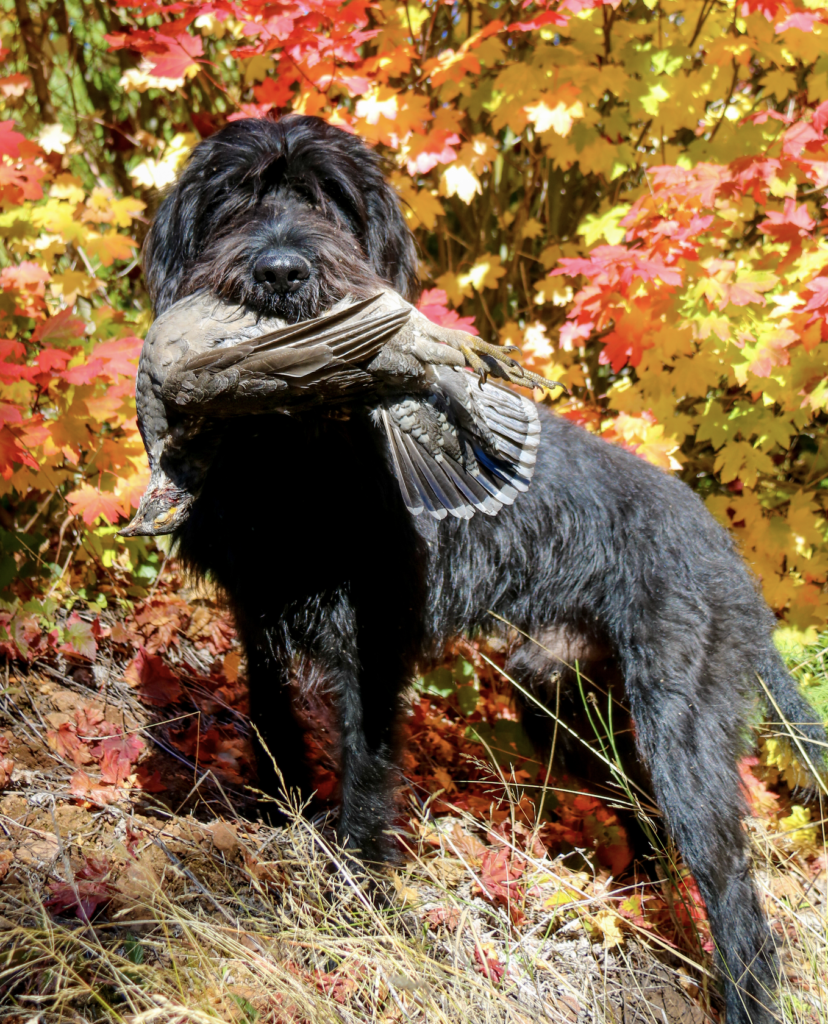
Mountain quail are also abundant but harder to locate as the season progresses and big game hunters invade the woods. Mountain quail can hold so tight, like nothing you’ve ever seen. We’ve had our pudelpointers go on point within inches of a mountain quail covey, and the birds won’t move. You’ll love it and so will your dogs!
Most hunters drive roads in search of birds, then turn the dogs loose. The edges of logging roads are places all four species can be found in the morning and evening, gathering food as well as grit.
Gated roads that allow non-motorized access are some of our favorite habitats to hunt. We like taking off on a mountain bike, letting our pudelpointers work ahead.
If you’re fit to hike and your dogs can cover ground, focus efforts along old cat roads–rudimentary roads that were punched into the forrest to access logging sites. If located near stands of mature timber and logged units, these crude roads can hold all four species of birds, as well as turkeys.
Start early in the morning to beat the heat, while there’s still moisture and heavy bird scent on the ground; evenings can also be productive. Your dogs can cover a lot of ground, so be sure to have plenty of fresh water. Make sure their toenails are trimmed with no rough edges, as the ground is rocky and hard and you don’t want to deal with split or torn nails.
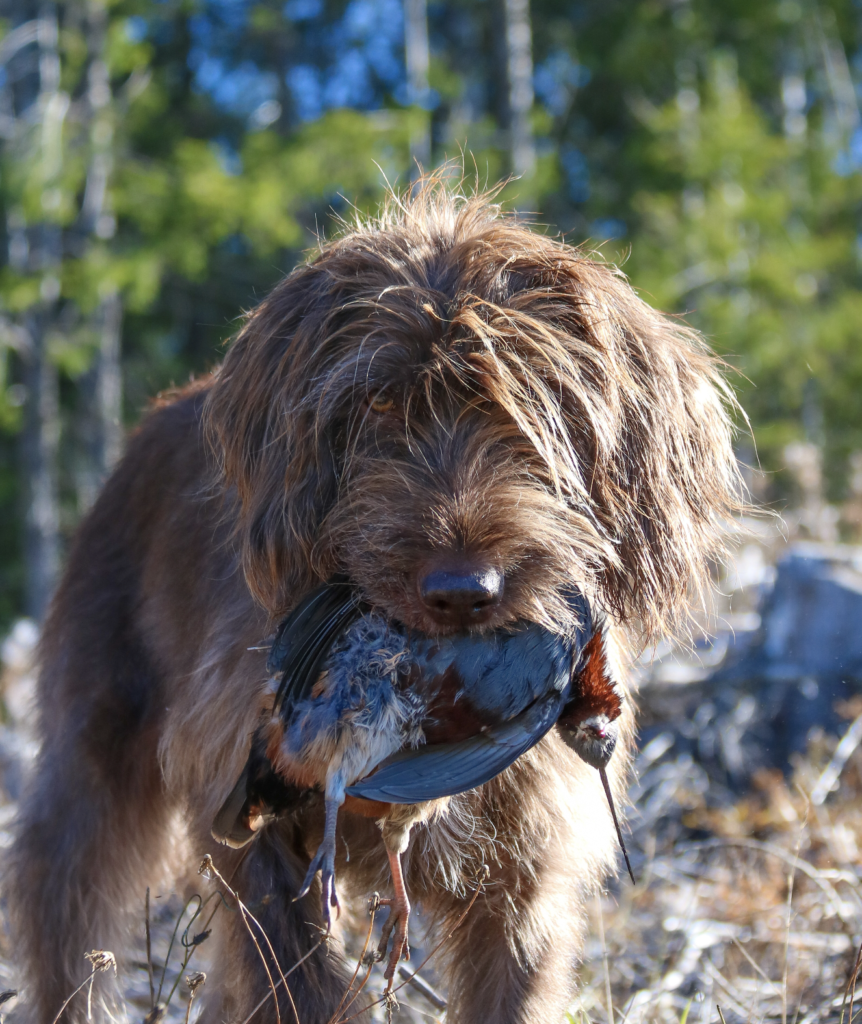
Be sure the long hair between the toes and pads, as well as inside the ear canals, is trimmed because grass seeds can be prevalent due to the extra-dry conditions we’ve faved. Not until we get a series of hard rains will grass seeds subside, so it’s a good idea to bring a fine-toothed grooming brush, even scissors to cut out knotted fur.
If running on rock and dry dirt, check your dog’s pads to make sure they’re not split or worn too thin. Make sure your dog is in good shape and not overweight; if they are, don’t push too hard, for we all know a driven gun dog doesn’t know when to stop.
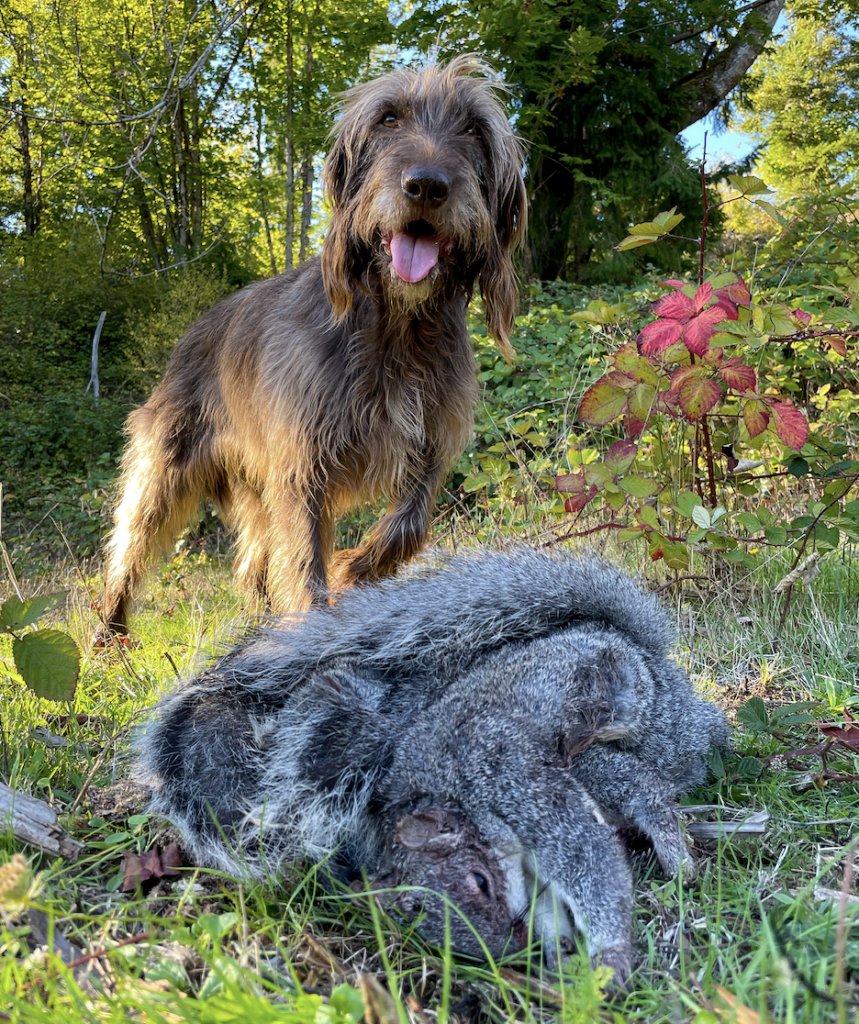
Pudelpointers love squirrel hunting. If they see a squirrel on the ground they’ll chase it until it trees, then wait for you to close in for the shot. They’ll also scent them, track, and tree them. Pudelpointers love retrieving tree squirrels. Pudelpointers also thrive on retrieving ground squirrels, and it’s good practice to shoot them at a distance and direct your dog using hand signals, for the retrieve.
When it comes to hunting fall turkey with you pudelpointer, they can be sent from a long way to break up a fall flock. You can then grab your dog and sit in some brush, against a fat tree, and call the birds back in using assembly calls. Your dog will love it and it’s a good way to enforce restraint. Pudelpointers will also track and point fall turkeys, which leave a lot of scent on the ground. Make sure the state you’re hunting in allows the use of gun dogs for fall turkeys; not all states do.
